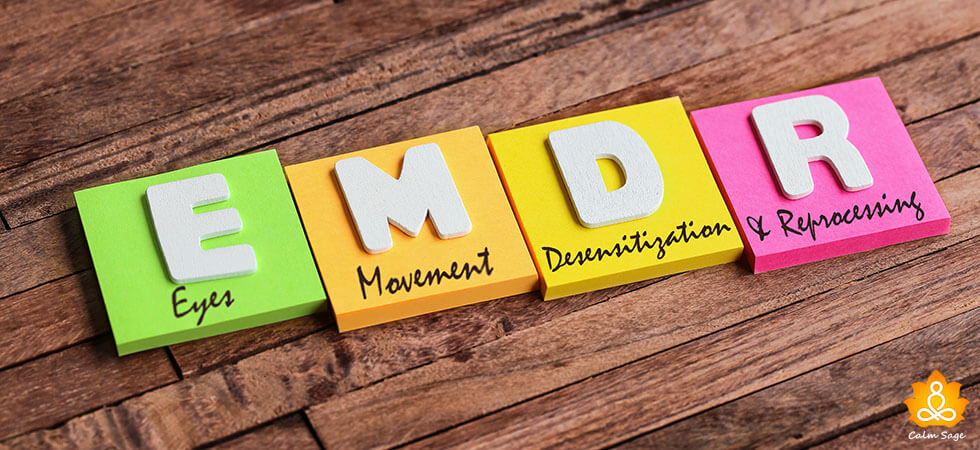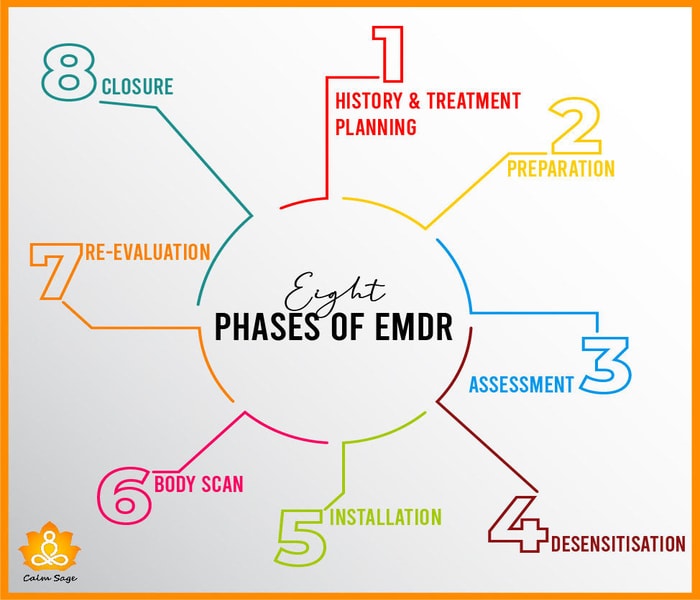What is EMDR Therapy and How Does It Work?

List of Contents
What Is EMDR Therapy?
Eye Movement Desensitization and Reprocessing (EMDR) therapy is An interactive psychotherapy technique that helps in relieving psychological stress. It is a well-known and effective treatment plan for post-traumatic stress disorder (PTSD) and other traumas.
The basic aim behind EMDR therapy is to relieve traumatic pain and triggers experiences in doses in which the therapist directs the eye movements and relieves stress.
The stress-relieving strategies implemented in EMDR makes it effective and successful among the world. EMDR does not let emotional upsetting take place again after or during the therapy sessions.
This therapy basically works on the exposure of thoughts or memories without having a psychological stress. With time and continued therapy sessions, the therapy works on decreasing the impact of negative memories and thoughts from the mind.
Benefits of EMDR Therapy
- Panic attacks
- Eating disorders
- Anxiety
- Depression
- Addictions
Basically, It is recommended for people with PTSD and other traumas. Also, those people who are struggling with their bad past experiences. Apart from PTSD and traumas, EMDR also works for:
Disclaimer: As BetterHelp Affiliate, We may receive compensation from BetterHelp or other sources if you purchase products or services through the links provided on this page.
How Does EMDR Therapy Works?
EMDR Therapy consists of eight different Phases that are generally accomplished in around 12 multiple sessions.

Phase 1: History and Treatment Planning
During phase 1, the therapist accesses you on the basis of your history. After assessing, decides the flow of treatment process. This assessment and evaluation phase also consists of identification possible trauma and traumatic memories to specify the treatment plan.
Phase 2: Preparation
During phase 2, the therapists explain and help you with various coping ways with psychological and emotional stress a person is continuously experiencing. Basically, mindfulness, stress management, and other breathing techniques are taught during this process.
Phase 3: Assessment
During phase 3, the therapist identifies and tracks the specific memories which need to be targeted and worked. Along with this, the therapist also identifies associated components that trigger the trauma. This plan works on each memory individually.
Phase 4-7: Treatment
Phase 4-7 includes treatment and specifically works on desensitization, installation, body scan, and closure. The treatment phase specifically works on targeted memories. The therapist works on negative thoughts, images, and memories.
The core working of eye movements and desensitization starts from phase four. The working of eye movement and other components vary and depend on the severity of the case. After the simulation process, the therapist asks to notice the feelings and thoughts. This phase does not come up with a specified timeline; it totally depends on your case.
If in case, you are feeling more distressed during this phase, the therapist works through mindfulness and other traumatic memories. The aim is to fade all those negative memories and thoughts from the mind and establish inner peace.
Phase 8: Evaluation
During this phase, the therapist asks to track the progress and evaluate all the sessions. Similarly, the therapist also provides the same progress.
Talk With EMDR Professionalist
Is EMDR Therapy Effective?
Studies show that EMDR therapy is really effective for PTSD specifically for veterans. It works on delusions, anxiety, hallucinations, and depressive symptoms to establish inner peace and fade all the memories. EMDR is a type of prolonged exposure therapy and works on all the symptoms.
The working strategy of EMDR therapy makes it effective and successful around the globe.
Facts About EMDR Therapy:
- EMDR Therapy is safe with fewer side effects.
- Eye Movement Desensitization and Reprocessing Therapy alleviate a positive thinking pattern.
- EMDR Therapy works on sleeping and dreaming patterns as well.
- The working process of EMDR therapy is slow but is known to be really effective.
- Teaches various coping strategies.
- Introduces self-help and fades the memories.
I hope this blog helps you to learn everything about EMDR Therapy. Comment down and let us know your views on EMDR Therapy. For more such content, follow Calm Sage on all social media platforms.
Thanks for reading.
More Relavant Articles:
Therapy Terms Everyone Needs To Know: Therapy Guide
Therapy Guide: Understanding Therapists and Your Role in a Therapy
Your First Therapy Session Guide | Everything You Need To Know





















I have never heard of EMDR Therapy before, but this blog helped me!
The EMDR term is totally new to me until I saw this article & how it can be extremely helpful for people fighting with different issues.. will share this with my group for sure